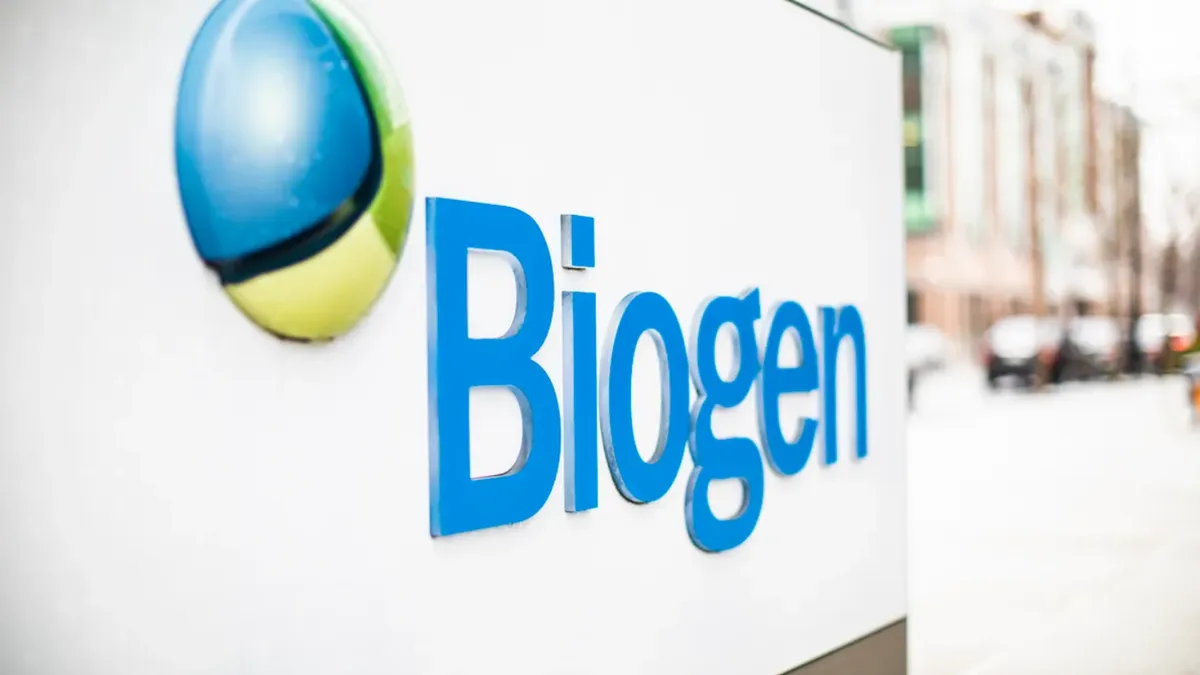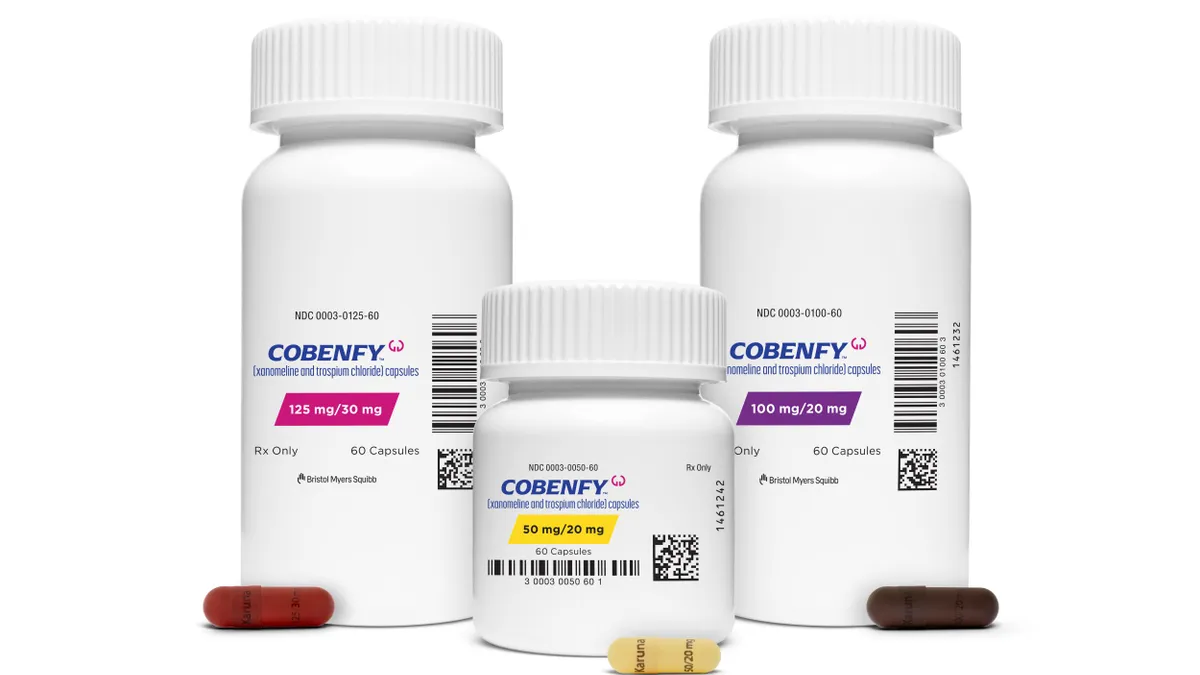Industry leaders talk often about being focused on patients, developing outcomes-based solutions, providing value to patients, and developing personalized and precision medicine. But what does it mean to be patient-centric in the pharmaceutical industry? Is it patient engagement? Is it addressing patient compliance?
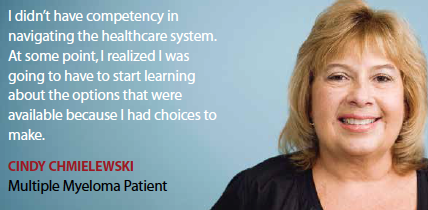 Being patient-centric is all of the above — and more. To be truly patient-centric means understanding the patient experience through the journey of diagnosis and treatment. Nowhere is this more important than in the treatment of cancer. Patients diagnosed with cancer often face difficult and life-changing decisions while in a state of emotional turmoil.
Being patient-centric is all of the above — and more. To be truly patient-centric means understanding the patient experience through the journey of diagnosis and treatment. Nowhere is this more important than in the treatment of cancer. Patients diagnosed with cancer often face difficult and life-changing decisions while in a state of emotional turmoil.
“I was blindsided by my diagnosis," says Cindy Chmielewski, a retired educator in New Jersey. Ms. Chmielewski was diagnosed with multiple myeloma in 2008.
“I had been going to an orthopedic doctor for back pain, and he diagnosed me with degenerative disc disease," she says. “But the pain was getting worse. An X-ray revealed that I had compression fractures. Blood work showed I had anemia and I thought the hematologist was going to talk about iron supplements. When he told me about my diagnosis, I only heard cancer. The first question I had was: How long was I going to live?"
Ms. Chmielewski says at the time she didn’t have much competency in navigating the healthcare system. She had a stem cell transplant on the recommendation of her oncologist and myeloma specialist, but she had a minimal response to the transplant. It was only then that she started educating herself about myeloma and treatment options.
“At that point I realized I was going to have to start learning about the options that were available because I had choices to make," she says. “I underwent oral chemotherapy and did another protocol that involved three drugs. I’m now doing maintenance therapy. I’m in partial remission."
Ms. Chmielewski’s experience is unfortunately not unique. Kathy Gram, director of patient advocacy at Takeda Oncology, who was diagnosed with colorectal cancer seven years ago, also understands the underlying challenges involved in patient care.
“I am a nurse and I was surprised about how much I didn’t know or know what to expect," she says. “This diagnosis came as a surprise to me."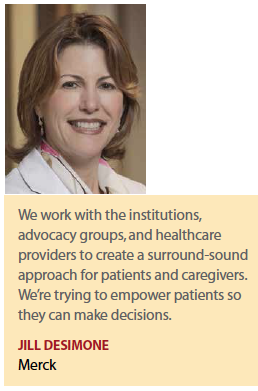
Ms. Gram says while she was fortunate to live in the Boston area with good hospitals and doctors, she would have liked to have had more support groups or networks specifically for younger patients with colorectal cancer.
“I found support groups for general cancer issues, but would have liked to talk to other people in my age group about our experiences," she says. “The oncology clinics are busy, there is a shortage of social workers, and physicians and nurses have to focus on the patients who have the most critical need. I can understand why if they see someone who has a knowledge base and seems to be coping well, this patient might not get additional support."
Ms. Gram says being a cancer patient has helped her in her position to provide better education to other cancer patients.
“My experience establishes a sense of trust between the patient community and my company," she says. “When I let patients know that I have also gone through an experience and I truly do appreciate and care about helping their quality of life, I think right away this establishes a trusting relationship. Initially, patients look skeptically at our programs as a way to sell products."
Ms. Gram says Takeda Oncology provides unbranded patient education and disease awareness.
“We fund live programs and teleconferences," she says. “We have our own ambassadors who speak to patient groups through various channels and they are there to offer hope, inspiration, and healthy living tips on how to live with myeloma, for example. We’ve touched thousands through our ambassador program."
Takeda also provides funding for support groups through third parties, as well as educational programs for the support groups that are unbranded.
“Patients say their physicians and nurses are their primary sources of information, but a very close second is peers," Ms. Gram says. “By joining a support group, patients learn so much about every aspect of their disease."
Pharma as a Provider
Experts say pharma companies could do a better job of understanding the emotional toll and burden that cancer patients face.
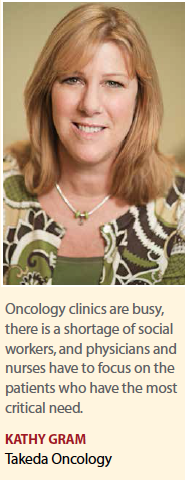 “Many pharma companies are still overly focused on professional selling of brand benefits and often do not place enough emphasis on understanding and shaping the broader patient experience of those with cancer in a positive way," says Dan Bobear, principal and managing director of Patient Experience Project. “During this difficult time, patients want to better understand their options, and choosing the best treatment path is often very complicated. Companies can play a greater role in helping patients to work with their oncologists, facilitate more effective interactions, and ultimately make the most informed treatment choice."
“Many pharma companies are still overly focused on professional selling of brand benefits and often do not place enough emphasis on understanding and shaping the broader patient experience of those with cancer in a positive way," says Dan Bobear, principal and managing director of Patient Experience Project. “During this difficult time, patients want to better understand their options, and choosing the best treatment path is often very complicated. Companies can play a greater role in helping patients to work with their oncologists, facilitate more effective interactions, and ultimately make the most informed treatment choice."
The diagnosis of cancer brings a lot of anxiety and fear, says Jyoti Patel, M.D., associate professor in medicine-hematology/oncology at Northwestern University Feinberg School of Medicine.
“We need to tailor how we approach patients; there are patients who are remarkably well-informed and there are patients who step back and wait for their doctor or healthcare team to provide more information," she says.
Angela Wheeler, CEO of Cello Health Insight, says while cancer patients receive a lot of information, it is not necessarily the right information at the right time.
“The time of diagnosis is not the right time for physicians to try to give information about the disease and treatment to patients," she says. “The information is not being heard by the patient and it’s not being heard by the caregiver. Patients and caregivers need written information that they can read so that it is available when they are emotionally ready to deal with the diagnosis."
Michael Kurman, M.D., senior medical director, INC Research, says today there is so much information available that it can be overwhelming for patients.
“Patients are getting information, but I don’t know about the quality or consistency of that information," he says. “It could be everything from what can be found in a library to information that is useful to being unhelpful to even being inaccurate. I don’t know if patients are able to sort this out."
Ms. Wheeler says physicians often direct patients to websites, but this may not be written down or patients are given resources that read more like a scientific paper than patient-friendly, understandable information.
“This makes it really difficult to understand what it means to be diagnosed with cancer," she says. “Patients then have to make a life-changing decision about treatment."
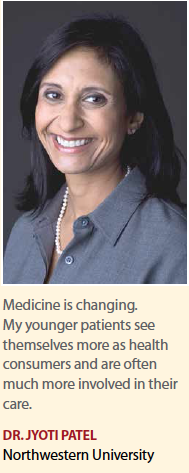 Dr. Patel says there is much more that can be done to help patients manage their anxiety.
Dr. Patel says there is much more that can be done to help patients manage their anxiety.
“I provide my patients with an after-visit summary," she says. “We use cancer.net as a primary source because it is physician vetted and it is reliable. I feel very comfortable with the information."
Cancer.net is sponsored by the American Society of Clinical Oncology, with support from the Conquer Cancer Foundation.
Another reliable site, she says, is cancergrace.org, the Global Resource for Advancing Cancer Education (GRACE), a nonprofit organization that provides information about best practices in cancer treatment.
“The information on websites should be digestible and the site should be friendly to patients," Dr. Patel says. “Information should be presented in such a way that people can get the content they need. Then if they want to delve more deeply into statistics or look at the biology or supportive care, they can do that as well. A site shouldn’t immediately hit patients, who are in a very vulnerable time, with difficult-to-digest statistics."
Dr. Patel says the first encounter with patients is to make sure they are ready and prepared for the conversation.
“Often our nurse navigator will provide some resources to patients before they even come in; we also ask them to have a friend or family member with them who can record information and help ask questions," she says. “Many hospitals have cancer learning resource centers. We have one within our hospital. Larger cancer centers will have social workers to help direct patients to resources around the city, support groups, wellness centers, and advocacy organizations."
Making Education Valuable
Michael Zilligen, president of Ogilvy CommonHealth Specialty Marketing, part of Ogilvy CommonHealth Worldwide, says it’s imperative to adapt and communicate a message platform that demonstrates the treatment value the product brings to patients as well as to providers and payers.
“Many physicians are not trained or equipped to talk about value or cost, for that matter, with their patients, and if the manufacturer is not clearly articulating the value of the medication, then how can we expect physicians to do a good job?" he asks.
Mr. Zilligen says to help care systems improve the communication between provider and patient, the key is to have the value proposition validated and ready to roll out at the time the product receives approval.
Jill DeSimone, senior VP, US commercial operations, oncology, at Merck, adds that it’s important for pharmaceutical companies to create partnerships with healthcare providers.
“We work with institutions, advocacy groups, and healthcare providers to create a surround-sound approach for patients and their caregivers," she says. “We’re trying to empower both patients and their caregivers so that they can make decisions. Patients need certain materials at certain times."
For Merck’s Keytruda, for example, the company includes a reference card for patients with website information and toll-free phone numbers so they know where to go when they need information. Keytruda was approved in the United States in September 2014 for metastatic melanoma.
Health literacy is another important aspect of any communication, Ms. DeSimone says.
“We want to be sure that all of our materials are written in a way that is understandable and accurate from a health perspective," she says. “Many times patient information, whether it be through a pharma company or an institution, is written in a way that is not necessarily understandable."
Mr. Bobear says the best content is emotionally connective, dynamic, and peer-to-peer in nature.
“The bottom line is that if companies can provide content that matters, people will gravitate toward it," he says. “Great content also facilitates the growth of online communities where people can support and educate each other in a realistic and authentic way."
Industry leaders also mention Genentech as another good example of a company that gets patient outreach right. For patients receiving Herceptin, Perjeta, or Kadcyla, the company provides a program called HERConnection. Included in this program is information about HER2 breast cancers; a welcome kit with a treatment planner; a patient-support line with phone, email, mobile, and online support; and help with reimbursement issues.
Ms. Gram says Takeda looks at the impact of the company’s various programs by the number of patients reached.
“We do surveys to see what effect a program has had," she says. “We also do about 50 local patient outreach programs a year with physicians speaking with patients. We do pre- and post-event surveys to see if patients learned anything, if they need to get a second opinion, or if they need to form a healthcare team. We look at the results of the survey as a way to benchmark how the program is going."
Ms. DeSimone says Merck measures the impact of its programs through focus groups, feedback from patients, advocacy groups, nurses, and market research.
Understanding the Patient to Provide Better Education
To provide more meaningful content, Mr. Bobear suggests that pharma companies need to have a better understanding of the day-to-day experiences of cancer patients, what they are going through, the nuances of their disease, the issues they struggle with, the interactions they have with physicians, what their unmet needs are, and the questions that they have about their treatments and side effects.
“Unfortunately, oncologists often don’t have enough time to spend with patients as they progress with their condition," he says. “The increasingly stretched system is not set up to allow physicians to spend enough time with patients, so there is a need for better education about choosing the best treatment option, financial management, and staying on treatment, especially for oral therapies. Going forward, pharma companies will need to play a more important role in helping to improve information exchange, provide education, facilitate connections, and foster an environment of emotional support. All of this will ultimately lead to companies becoming an increasingly valued part of the healthcare system."
Ms. Wheeler says patient materials need to be very clear and presented in a patient-friendly way to the causes of cancer, treatment options, and how to initiate treatment.
“Unfortunately, there are very few resources that list treatment options in a nonpromotional manner," she says. “Finding access to a list of treatments, the risks and benefits of each, and how to make a treatment decision is really quite difficult. Even resources such as the American Cancer Society or the Mayo Clinic, which are patient friendly, often do not have the most recent information. Patients need very basic information about prognosis and starting treatment and about what to expect from treatment. A six-month survival rate beyond the average doesn’t mean anything to patients. They don’t know how to interpret those statistics."
Ms. Chmielewski says she would have appreciated being given more resources, especially regarding her medication.
“The information I had was what I found on my own or because I asked for it," she says. “No one ever handed me anything."
Patients, Ms. Chmielewski says, need information about side effects, dosing, infusion schedules, financial assistance, and basic information about getting a specialty product.
“I thought I could pick up my prescription for my oral therapy from CVS," she says. “But I had to use a specialty pharmacy and I had never done that 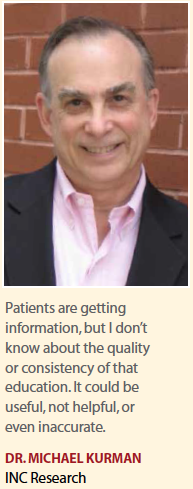 before. People need to know about the delivery of the drug, including whether someone needs to sign for a package."
before. People need to know about the delivery of the drug, including whether someone needs to sign for a package."
Financial assistance information is critical, she says, because cost is an obstacle, especially for oral chemotherapies, which may be covered differently by insurance companies.
“Although there are financial assistance programs available, a lot of people don’t know about them," she says. “Some people may not even want to hear about these treatment possibilities since they can’t afford a $2,000 or $3,000 copay a month."
Ms. Chmielewski also says having a phone number to reach manufacturers would be helpful to report a side effect or to talk about concerns.
Dr. Patel says as more cancer therapeutics become oral medications, it is especially important for companies to provide accurate and easy-to-understand information.
“We’re prescribing oral medications with a whole host of side effects and then we’re seeing patients two weeks, four weeks, or even eight weeks later," she says. “We don’t have the luxury of teaching when patients don’t come in for an infusion every week. Companies should create online landing portals, chat rooms, or support sites to help patients."
Dr. Patel says Pfizer’s site for Xalkori is an example of a website that works well. Xalkori treats metastic non-small cell lung cancer that is caused by a defect in a gene called ALK (anaplastic lymphoma kinase). The site provides info about testing for ALK, as well as patient resources, including doctor discussion guides, how to fill the prescription through a specialty pharmacy, and getting financial support.
Cancer is a high-touch area, says Brandon Beaver, senior VP of sales, Sharps Compliance.
“The touch points for cancer patients are going to be earlier compared with other drug therapies," he says. “In oncology, manufacturers will want to have a touch point within weeks." (PV)
~~~~~~~~~~~~~~~~~~~~~~~~~~~~~~~~~
Cindy Chmielewski / Multiple Myeloma Patient
Jill DeSimone / Merck
Patients are getting information, but I don’t know about the quality or consistency of that education. It could be useful, not helpful, or even inaccurate.
Dr. Michael Kurman / INC Research
Medicine is changing. My younger patients see themselves more as health consumers and are often much more involved in their care.
Dr. Jyoti Patel / Northwestern University
Oncology clinics are busy, there is a shortage of social workers, and physicians and nurses have to focus on the patients who have the most critical need.
Kathy Gram / Takeda Oncology



